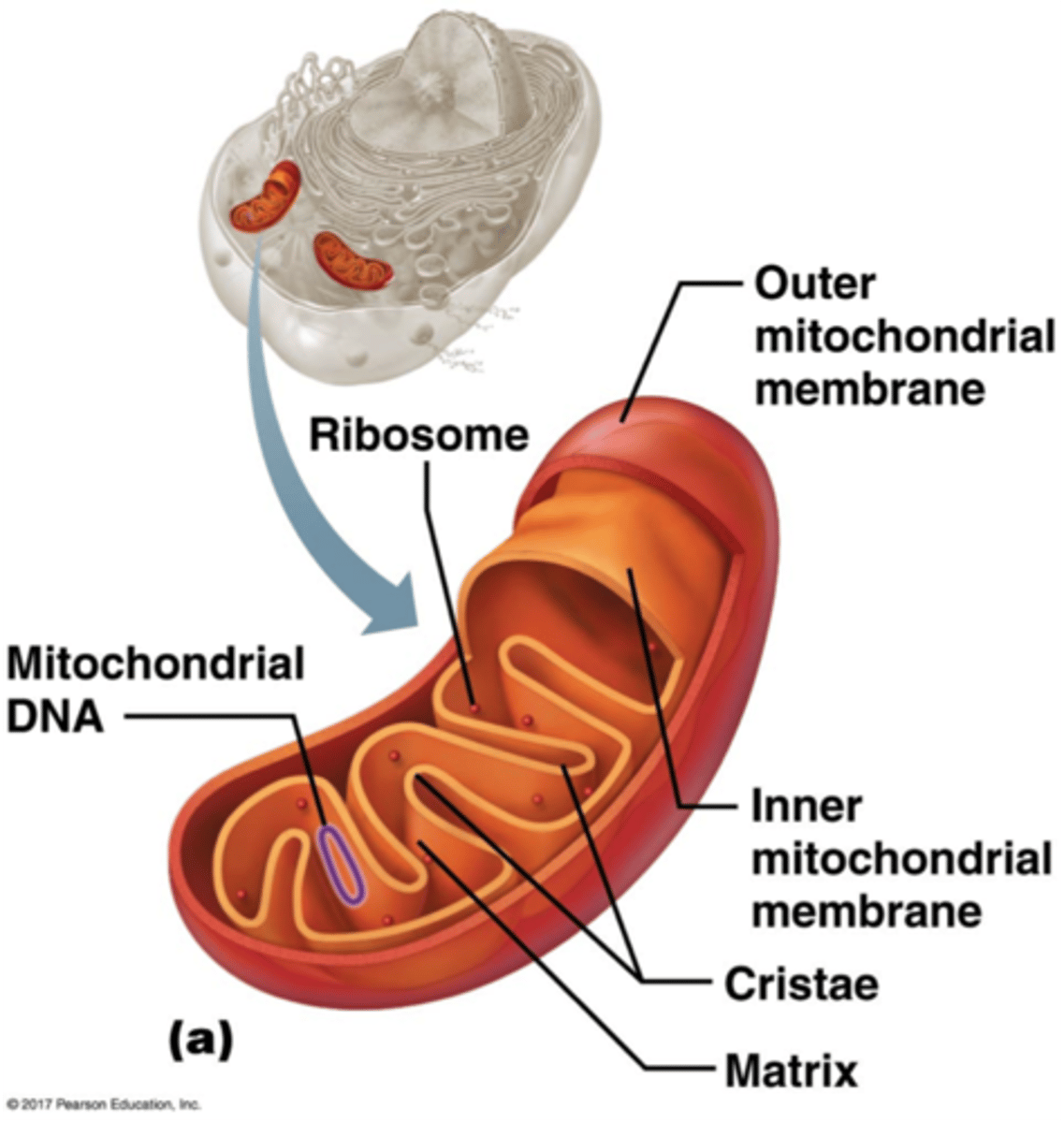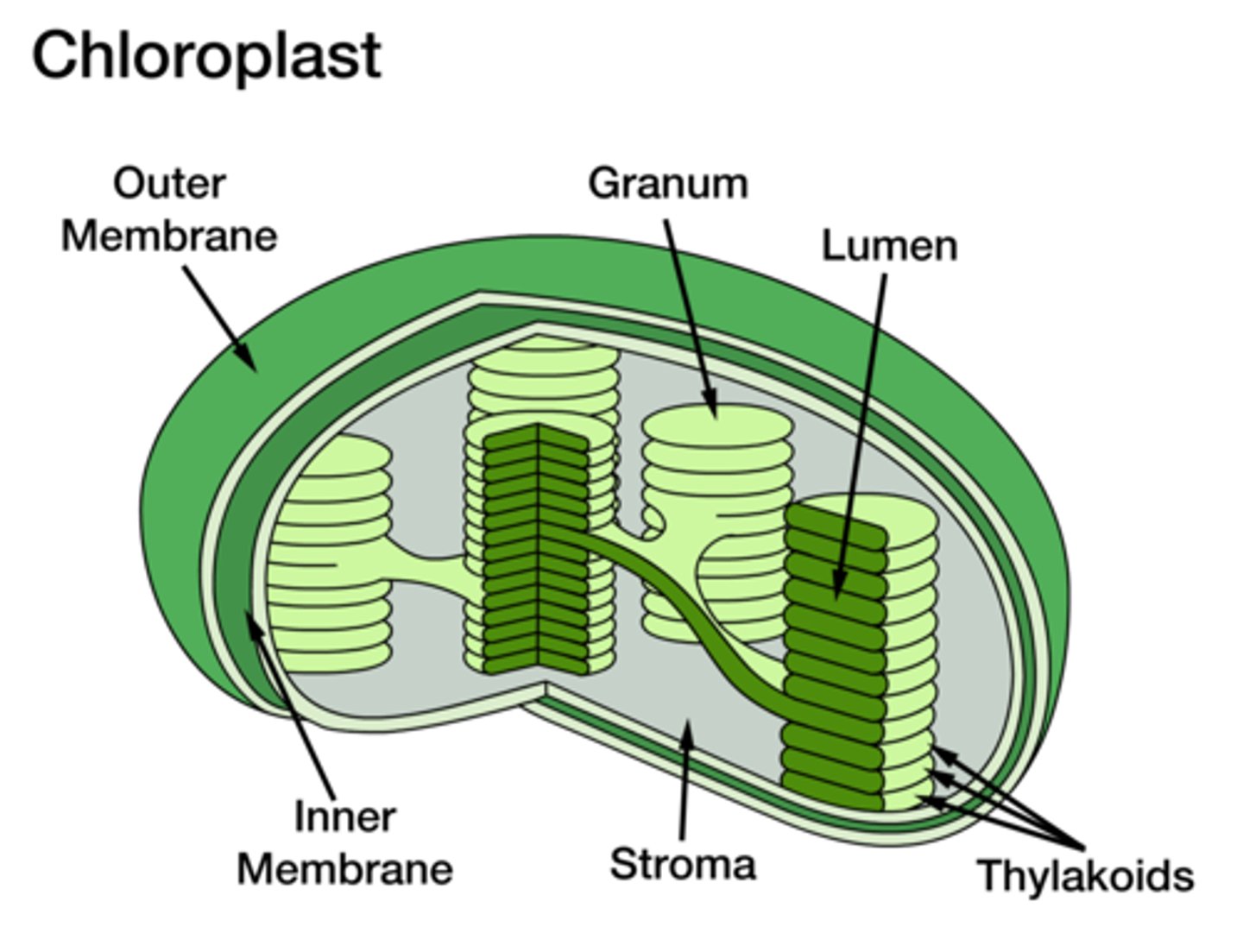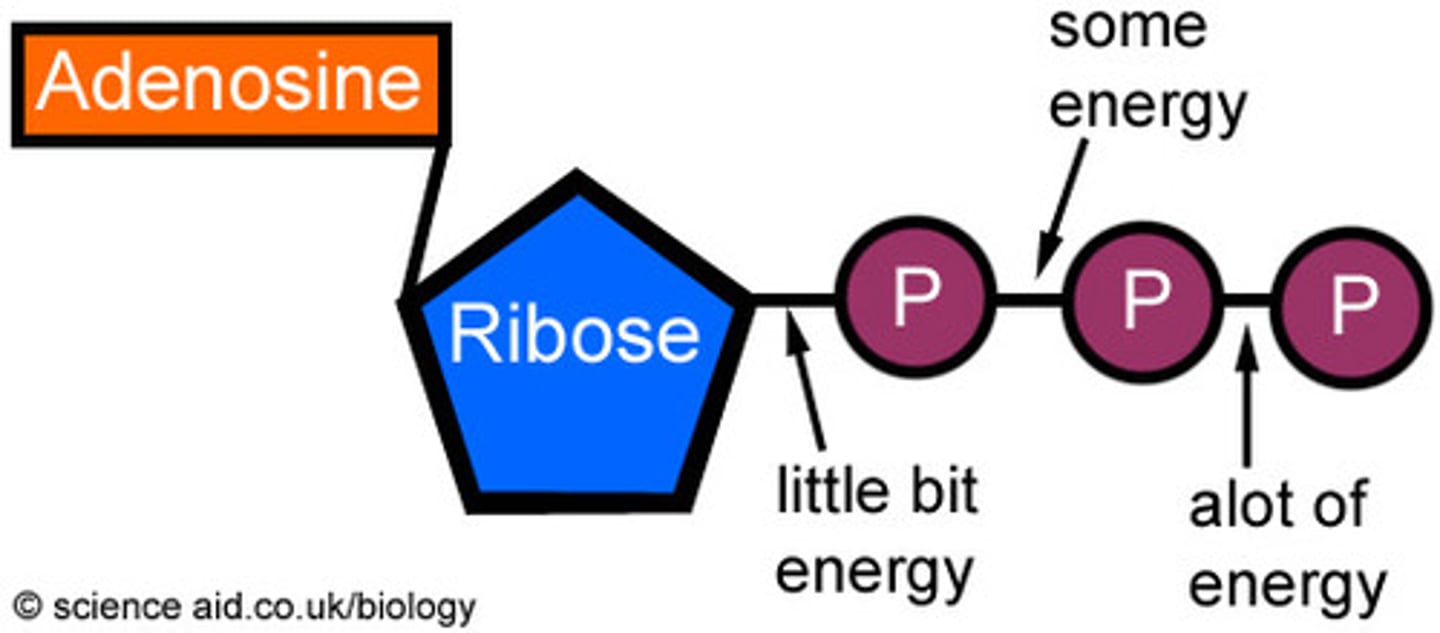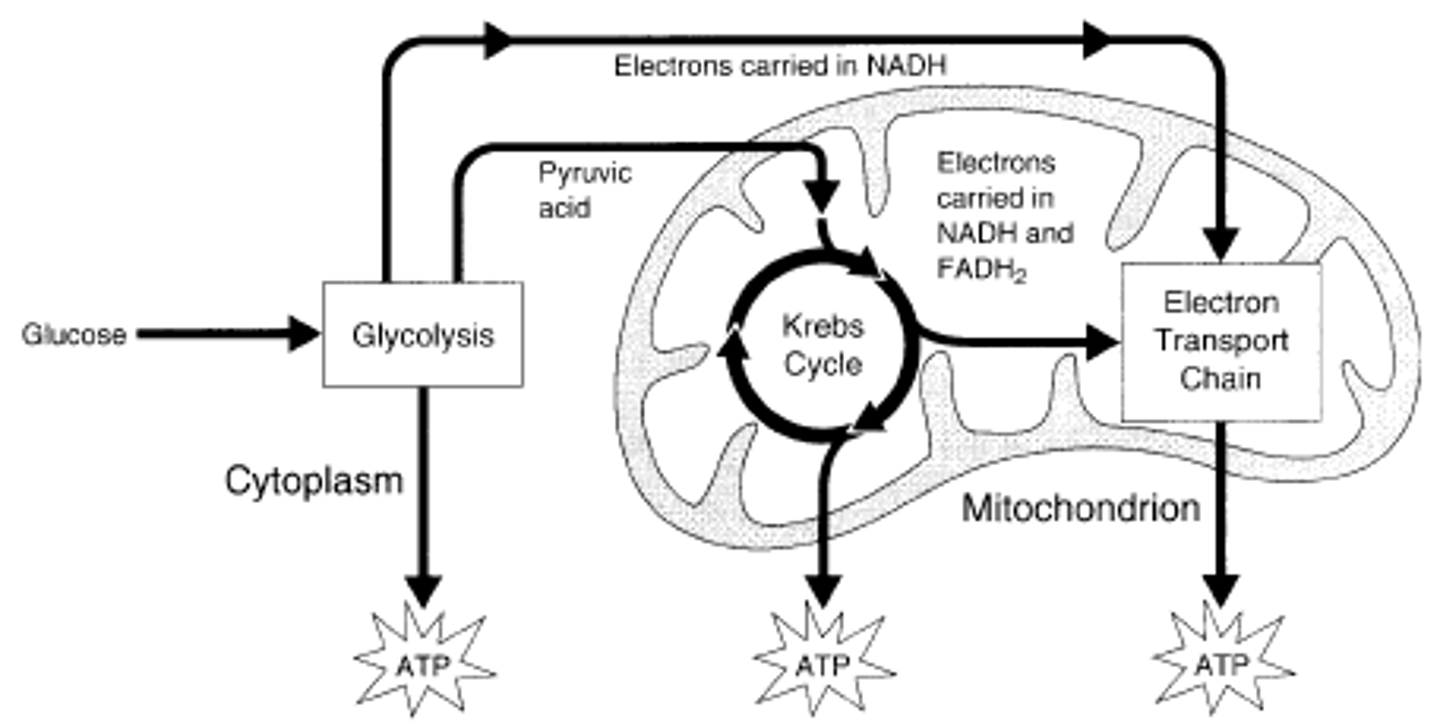Unit 1, AOS1, Chapter 2B: Cell Organelles (Mitochondria and Chloroplasts)
1/14
Name | Mastery | Learn | Test | Matching | Spaced |
|---|
No study sessions yet.
15 Terms
Identify 7 features of a mitochondrion
- Outer membrane
- Inner membrane
- Intermembrane space
- Cristae
- Matrix
- Ribosomes
- Mitochondrial DNA

Identify 7 features of a chloroplast
- Outer membrane
- Inner membrane
- Stroma
- Granum (plural grana)
- Thylakoids
- DNA
- Ribosomes

Define chlorophyll and its function
The green pigment of plants sits on the surface of
each thylakoid, absorbing light energy and converting it into chemical energy
Describe the basic chemical process of cellular respiration
The chemical energy stored in the bonds of glucose molecules is used to make ATP, which can then release energy to be used by cells, through the loss of a phosphate

Identify the 3 stages of cellular respiration
1. Glycolysis
2. The Krebs Cycle
3. The Electron Transport Chain

Describe Glycolysis (where, what)
- Occurs in the cytosol of the cell
- The breakdown of glucose into two molecules of pyruvate
- 2 ATP are produced
Describe the Krebs Cycle (where,what)
- Occurs in the mitochondria's fluid matrix
- 2 ATP are produced
Describe the Electron Transport Chain
- Occurs in the inner membrane of the mitochondria
- A series of membrane proteins and organic molecules that electrons are passed along
- ~32 ATP produced
Identify the chemical equation of cellular respiration
(Energy is approx. 36-38 ATP)

Identify the 2 stages of photosynthesis
1. The Light Dependent Stage
2. The Light Independent Stage
Describe the Light Dependent Stage (where,what)
- Occurs in the thylakoid membranes of the grana
- Light energy is converted into chemical energy (ATP and NADPH)
Describe the Light Independent Stage (where,what)
- Occurs in the stroma
- Enzymes in the stroma use ATP and NADPH to "fix" carbon from CO2 into molecules that can be used to build glucose
Identify the chemical equation of photosynthesis
(light energy and chlorophyll should be above and below the arrow)

Outline the Endosymbiotic Theory
The theory that mitochondria and chloroplasts evolved from free-living prokaryotes that were engulfed by early eukaryotic cells, forming a symbiotic relationship
Identify 3 pieces of evidence for the Endosymbiotic Theory
- Own circular DNA & ribosomes
- Double membranes (suggests endocytosis)
- Replication by binary fission